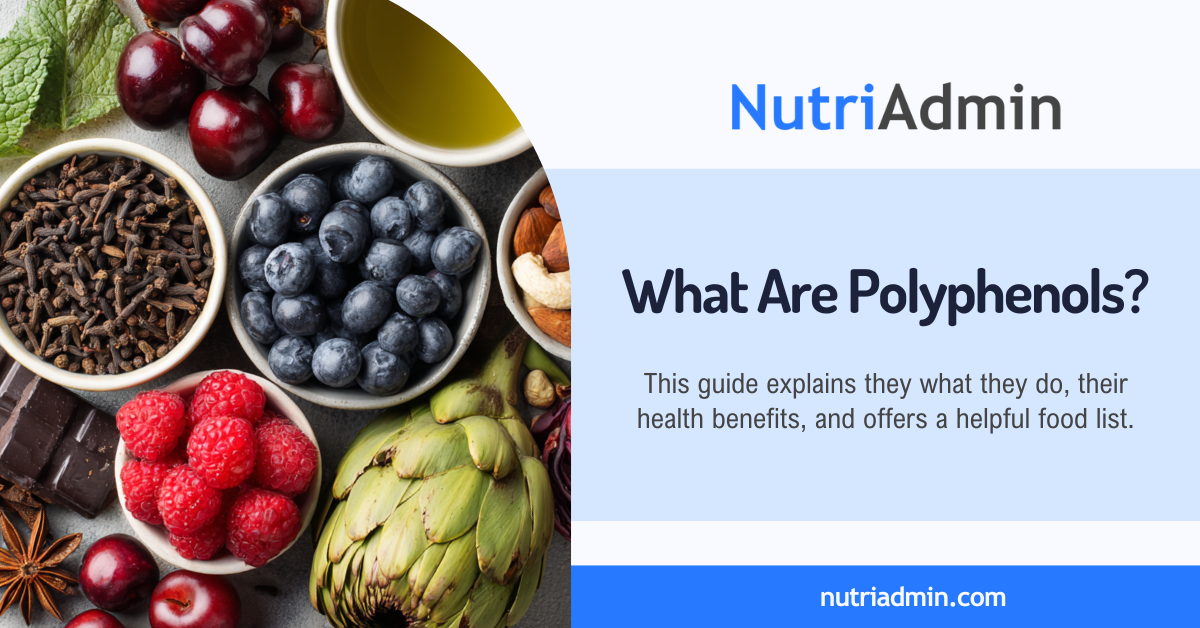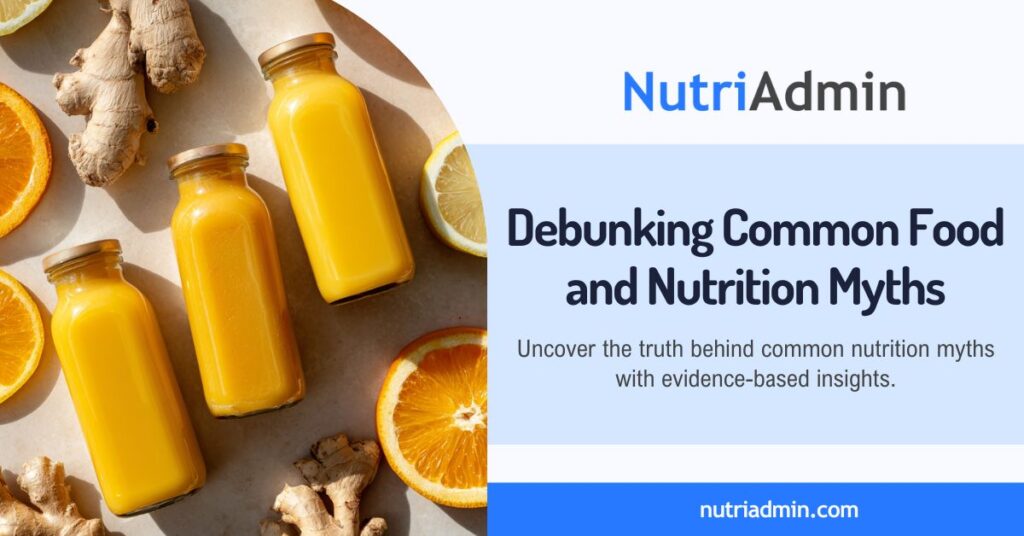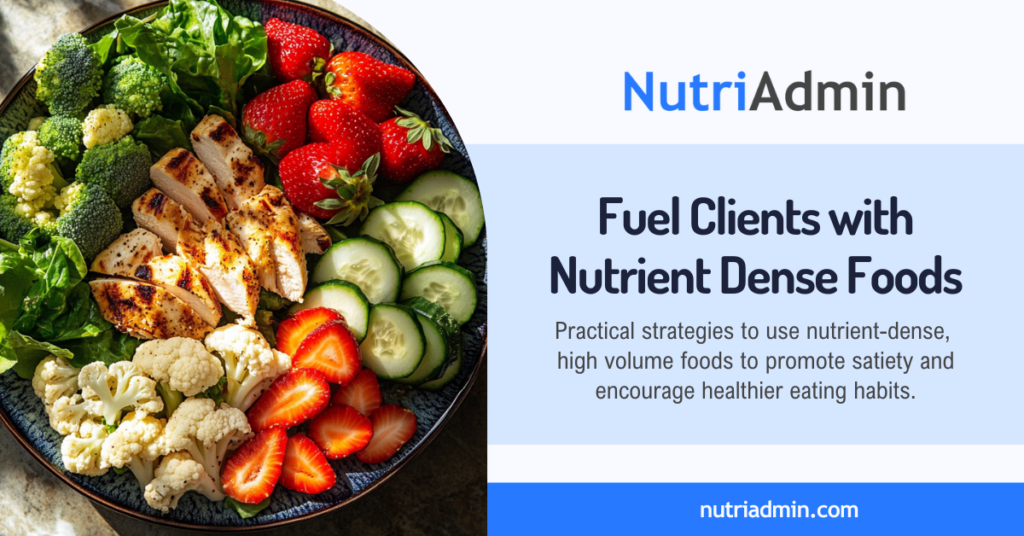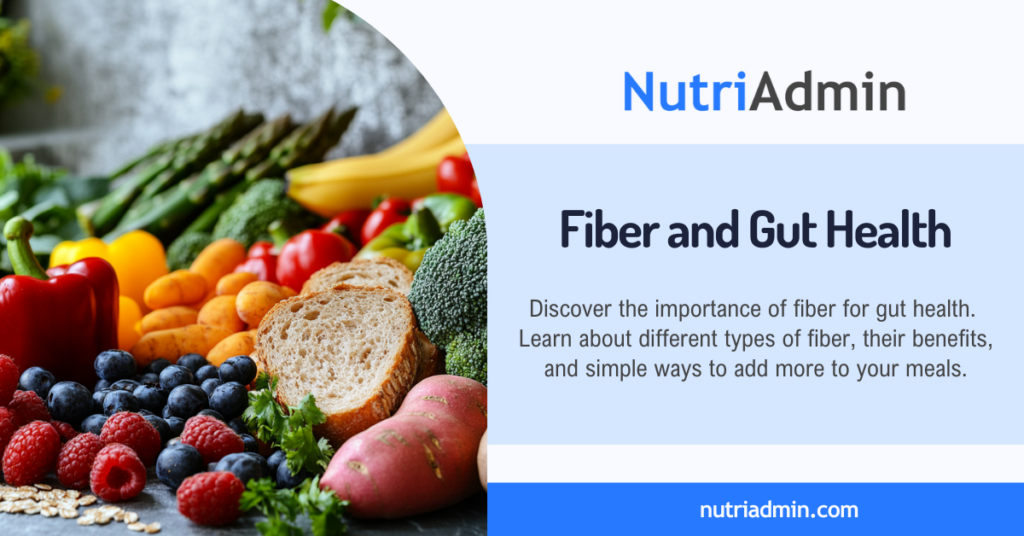Have you ever wondered why plant-based diets are consistently associated with better health outcomes? One reason is that polyphenols—a diverse group of plant compounds known for their antioxidant and anti-inflammatory properties. These compounds are quietly transforming our understanding of nutrition and its role in disease prevention. This article provides a comprehensive overview of what polyphenols are, what they do, where to find them, and how to turn that knowledge into practical guidance for your clients.
What Are Polyphenols?
Polyphenols are naturally occurring compounds found in plant-based foods. Structurally, they contain multiple phenolic rings and hydroxyl groups, which contribute to their biological activity. Over 8,000 types of polyphenols have been identified, categorized mainly into four groups:
- Flavonoids (about 60% of polyphenols) — e.g., quercetin, catechins, anthocyanins
- Phenolic acids (about 30%) — e.g., caffeic acid, ferulic acid
- Polyphenolic amides — e.g., capsaicinoids in chili peppers
- Other polyphenols — e.g., stilbenes like resveratrol, lignans in flaxseeds
These compounds are synthesized by plants to protect against UV damage, pathogens, and pests. In humans, they act as antioxidants and anti-inflammatory agents, influencing cellular processes and metabolic function.
What Do Polyphenols Do?
Polyphenols primarily act as antioxidants, neutralizing harmful free radicals that cause oxidative stress and cellular damage. Additionally, they have anti- inflammatory effects, which help modulate chronic low-grade inflammation—a root cause of many metabolic and degenerative diseases.
Beyond antioxidant activity, polyphenols provide the following potential health benefits:
- Supporting cardiovascular health by lowering LDL cholesterol, improving blood vessel function, as well as reducing blood pressure.
- Enhancing metabolic health by improving insulin sensitivity and glucose regulation, which may aid diabetes management.
- Interacting positively with the gut microbiome, where polyphenols are converted into bioactive compounds that further promote health.
Considerations and Potential Downsides
While polyphenols from whole foods are generally safe, very high doses from supplements could interfere with nutrient absorption or medication metabolism. Therefore, clients should aim for a food-first approach unless otherwise advised by a healthcare provider.
The following are certain considerations that you should be aware of:
- Iron Absorption: Some polyphenols can inhibit iron absorption, which may be a concern for individuals at risk of deficiency.
- Drug Interactions: Polyphenols can affect drug metabolism and may interact with certain medications. For example, compounds in grapefruit can interfere with statins and blood pressure medications, while green tea may reduce the effectiveness of some blood thinners. Always advise clients to consult their healthcare provider about potential interactions.
List of Polyphenol-Rich Foods
| Berries and Other Fruits | Blueberries, blackberries, strawberries, and raspberries Pomegranates Apples (especially with skin) Cherries and plums Grapes Citrus fruits |
| Spices and Herbs | Cloves (highest concentration) Star anise Turmeric Cinnamon Ginger Cumin Oregano Thyme Sage Rosemary Parsley Dill Coriander Nutmeg |
| Vegetables | Spinach Kale Asparagus Red onions Shallots Artichokes Broccoli Carrots Brussels sprouts Potatoes (with skin) Other dark-colored vegetables |
| Legumes and Grains | Soy Mung bean Black beans Lentils Chickpeas Peas Whole oats Barley Rye Whole Wheat Brown rice |
| Beverages | Green tea Black tea Coffee Red wine (moderate amounts) Pomegranate juice |
| Nuts and Seeds | Walnuts Hazelnuts Pistachios Flaxseeds Pecans |
| Other | Extra virgin olive oil Dark chocolate (70%+) Cocoa powder |
Helping Clients Incorporate Polyphenol-Rich Foods
Successfully integrating polyphenol-rich foods into clients’ diets requires practical, sustainable strategies.
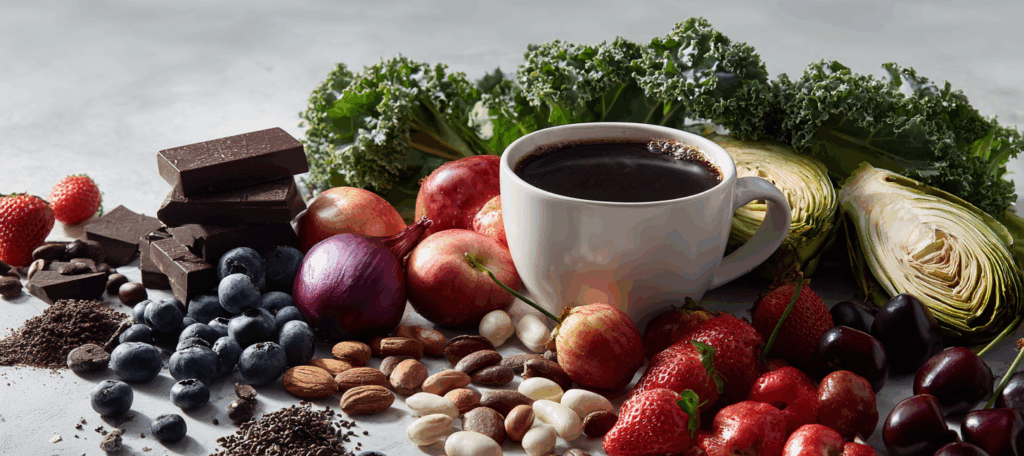
Emphasize Variety
The amount and type of polyphenols in foods vary depending on the food, its origin, ripeness, the way it is farmed, transported, stored, and prepared. To maximize benefits, encourage clients to “eat the rainbow” to maximize different polyphenol types.
Prioritize Whole, Minimally Processed Foods
Recommend choosing whole grains, fruits, vegetables, nuts, seeds, and legumes over processed options. Polyphenols are often concentrated in the skins and outer layers, so eating produce with the skin on (when safe and appropriate) maximizes intake.
Snack on Nuts, Seeds, and Dark Chocolate
Recommend keeping nuts (such as chestnuts, hazelnuts, pecans, and almonds), flaxseeds, and a small amount of dark chocolate on hand for snacks. These are all rich in polyphenols and offer other nutritional benefits.
Use Herbs and Spices Generously
Encourage flavoring meals with fresh or dried herbs and spices such as oregano, thyme, rosemary, sage, and cloves. Not only are these potent sources of polyphenols, but they can also replace excess salt.
Mind Cooking Methods
To preserve polyphenols, advise steaming or quick sautéing vegetables instead of boiling to preserve polyphenols. Add herbs toward the end of cooking, and enjoy some foods raw (such as berries) to retain heat-sensitive compounds.
Eat Seasonally and Locally
Whenever you can, choose seasonal and local produce. This is because polyphenol content may be higher and less degraded by storage and transport. It’s usually cheaper, too!
Using NutriAdmin to Create Polyphenol-Rich Meal Plans
Nutrition professionals can leverage tools like NutriAdmin to create customized meal plans rich in polyphenols.
NutriAdmin’s extensive recipe database allows easy selection of polyphenol-rich foods, helping coaches efficiently build balanced, nutritious meal plans tailored to client preferences and needs.
Moreover, NutriAdmin offers a meal plan generator feature that streamlines the process by allowing you to quickly build individualized meal plans based on client needs. As a result, you can deliver high-quality, tailored recommendations in less time.
Key Takeaways
Polyphenols are a diverse group of plant compounds with powerful antioxidant and anti-inflammatory effects. Found abundantly in fruits, vegetables, legumes, herbs, teas, and dark chocolate, these compounds support cardiovascular and metabolic health, influence the gut microbiome, and contribute to chronic disease prevention. While their mechanisms are still being explored, current evidence highlights their potential to modulate inflammation, improve insulin sensitivity, and protect against oxidative stress.
For nutrition professionals, understanding polyphenols helps inform strategies for promoting whole, plant-based foods and creating targeted meal plans that support long-term health outcomes.
